Contents
Sources of False Air
OWNING AND READING MOST IMPORTANT BOOKS IN CEMENT INDUSTRY + MANUALS AND NOTES AND SHEETS FROM THE MOST SUCCESSFUL PLAYERS IN CEMENT INDUSTRY WILL CHANGE YOUR CAREER AND WILL MAKE YOU REACH MANAGERIAL POSITIONS FASTER , KINDLY CLICK HERE TO GET EVERYTHING
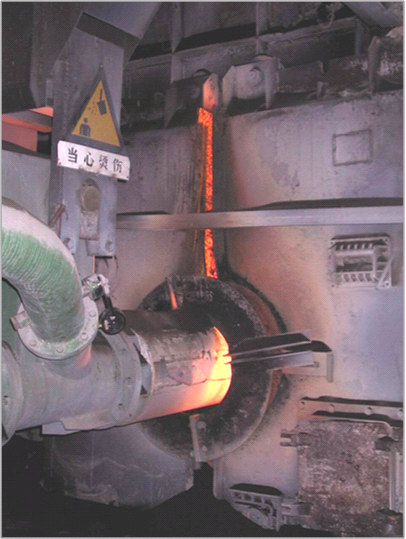
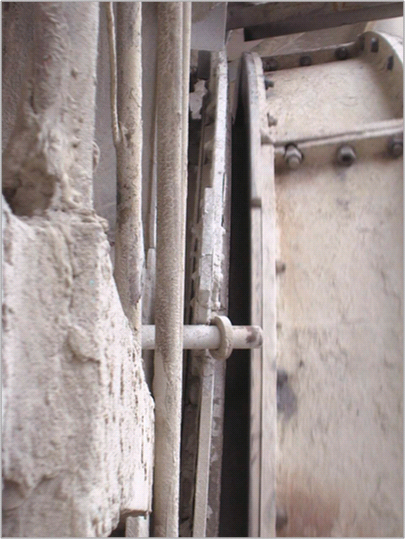
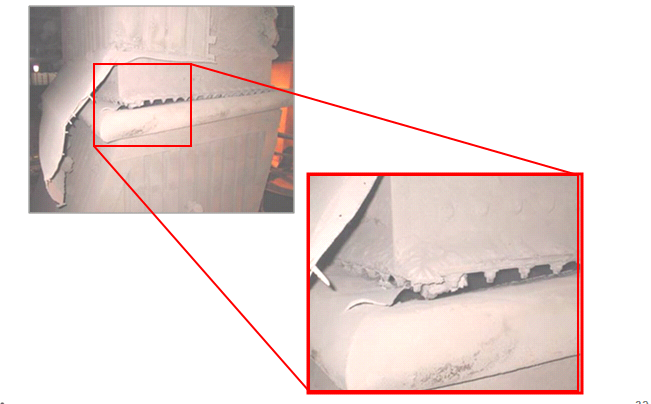
Unwanted false air in cement plants can be a big problem and has to be taken seriously. | ||||||||
| – | In fact, false air brings the following inconveniences: | |||||||
| * drop in production of installations | ||||||||
| * Increase of the power consumption | ||||||||
| * drop of temperature for drying raw material | ||||||||
| * higher wear of fans | ||||||||
| * difficulty to transport material | ||||||||
| – | It is therefore important to know the points where false air can appear and to know the percentage of false air | |||||||
| in order to take appropriate measures. | ||||||||
| – | For that, some measurements are necessary on site. | |||||||
| – | False air is mostly present in the following areas of a cement plant: | |||||||
| * Raw mill grinding area | ||||||||
| * Kiln area | ||||||||
| * Cement mill grinding area | ||||||||
| – | The potential entry points of false air are: | |||||||
| * Mill outlet | ||||||||
| * Feeding points | ||||||||
| * Holes in ducts | ||||||||
| * Flaps, expansion joints | ||||||||
| * Connections | ||||||||
| * Filters | ||||||||
Different Possible Ways for Saving Energy in the Cement Production
REVIEW FOR ENERGY SAVING IN CEMENT KILN
Modeling Balance of Cement Kiln
Circulating Element in Cement Kiln
Table (1) Reactions of Raw Materials and Reactions Enthalpies in Cement Clinker
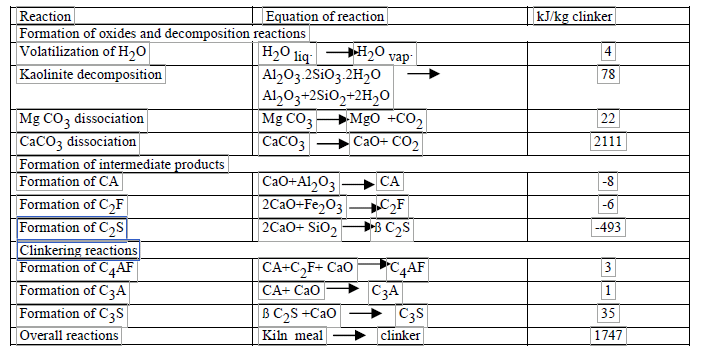
Table (2) Average and Best Practice Energy Consumption Values for Cement Plant by Process
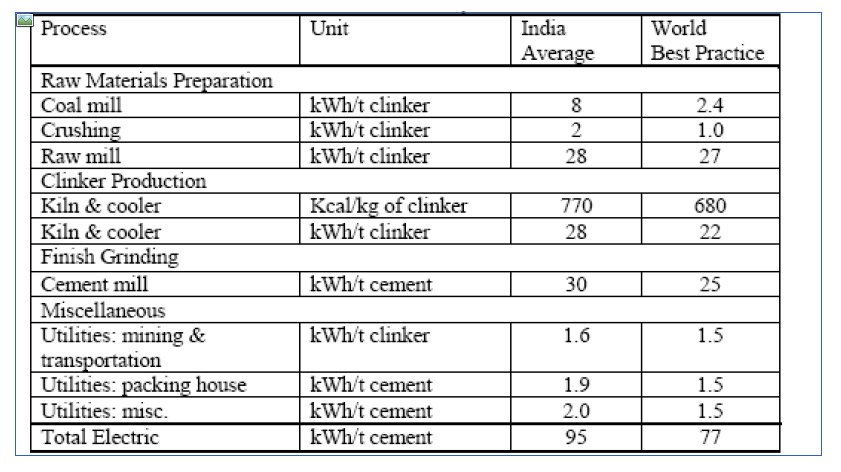
Clinker Cooling
Process Control
The main controlled variables of a cement kiln are the burning temperature and the exit gas temperature. The manipulated variables are the fuel rate and the kiln feed rate. The oxygen content in these gases is also usually controlled using the exhaust fan speeds but this control loop already existing in the industry.
MASS AND HEAT BALANCE OF CEMENT KILN
In a typical dry process kiln systems, the feed materials are preheated by the hot gases from rotary kiln. A secondary burner in the pr-calciner is included to improve energy efficiency. The mixture of the preheated and pre-calcined materials enters the rotary kiln, which is a counter flow reactor. Fuels together with air enter from the opposite end. The solid feed is heated to an extremely high temperature in the burning zone such that raw materials react and form nodular clinker. Clinker exits the kiln at about 1350 ºC and is cooled down to less than 120 ºC by cross flowing air. Part of the heated air from the cooler enters the kiln, another portion flows to the pre-calciner; the rest is released as exhaust air.
ENERGY CONSUMPTION IN CEMENT KILN PLANT
Table (2) provides the average energy consumption values by processes for cement kiln plant. In almost cases, the average energy consumption values is significantly higher than the best practice value, indicating that a strong potential for energy efficiency improvements in many cement kiln plants
OWNING AND READING MOST IMPORTANT BOOKS IN CEMENT INDUSTRY + MANUALS AND NOTES AND SHEETS FROM THE MOST SUCCESSFUL PLAYERS IN CEMENT INDUSTRY WILL CHANGE YOUR CAREER AND WILL MAKE YOU REACH MANAGERIAL POSITIONS FASTER , KINDLY CLICK HERE TO GET EVERYTHING
REFERENCES
[8] Akgun-Fehmi, “Investigation of energy saving and NOX reduction possibilities in rotary kiln”, International Journal of Energy Research, 2003, Vol.27, No.4, 455-466.
[9] Shiban J.,” Energy conservation”, World Cement, November, 2002.
[10] Worrell E., Martin N., and Price L.,” Potentials for energy efficiency improvements in the US cement industry”, Energy, 2000,Vol.25, No.12, 1189-1214.
[11] Elkajaer, H. P., “Determining the heat consumption of a four stage cyclone preheater by applying a mathematical model”. Zement-Kalk-Gips, 1980, No. 2, 63 -68.
[12] Gahzi, A,” Investigation of cement dry process with respect to fuel economy and product quality”, Thesis submitted for the degree of Ph.D in Chemical Engineering, Cairo University, 1997.
[13] Gardiek, H. O and Rose Mann, H., “Fuel energy consumption and fuel energy apportionment in the pre-calcining processes”, Zement-Kalk-Gips, 1981, No.9, 435-444,.
[14] Peng Feri, “Thermal analysis of cyclone preheater system based on a mathematical model”, Zement-Kalk-Gips, 1986, No.3, 133 -135.
[15] Kreft W., “Comparison of various bypass systems in clinker burning plants”, Zement-Kalk-Gips, 1990, No.1, 20 -25.
[16] Hansen, V., “Clinker cooler”, World Cement Technology, 1980, 76-81..
[17] Witsel, A. C, Renotte C, Remy M., “Contribution to dynamic modeling of a cement kiln”, Abstract, lab., d. Automatique, Faculte Polytechnique de Mons. Belgium. Saas.uxb.ac.be/Benelux, 2005.
[18] Bao L., ”Modeling, identification and control of cement kiln”, Computer Aided Process Engineering Center, Department of Chemical Engineering, Technical University of Denmark, DK-2800 Lyngby, Denmark. http/www. Capcc.kt.dtu.dk, documents/research./Poster EAM , 2004.
[19] Witsel A. C. and Renotte C,”Contribution to the control of a rotary cement kiln-A simulation study”, Abstract, lab., d. Automatique, Faculte Polytechnique de Mons. Belgium.www.wfw.wtb.tue.nl/Benelux, 2004.
[20] Kaantee U, Zevenhoven R, Backman R., and Mikko H, “Cement manufacturing using alternative fuels and the advantages of process modeling”, Fuel Processing Technology 2004, 85, 293-301.
[21] Kaantee U., Zevenhoven, R, Backman R, and Mikko H. ,“ Modeling a cement manufacturing process to study possible impacts of alternative fuels”, Paper accepted for presentation at on Recycling and Waste Treatment in Minerals and Metal Processing, 2002, June,16-20.
[22] Radwan A. M, Abed El-hamid, A. S and Eissa A. H,” Dynamic modeling, simulation and control of cement kiln systems ” AUEJ, 2005, Vol.8. No.12, 637-698.
[23] Shaleen K., Rangan B. and Uday G., “Energy balance and cogeneration for a cement plant”, Applied Thermal Engineering, 2002, 22, 485-494.
[24] Tahsin E., Vedat A., “Energy auditing and recovery for dry type cement raotary kiln systems- A case study”, Energy Conversion and Management 2005, 46, 551-562.
[25] Ernst W. and Christina G.,” Energy efficiency, improvements opportunities for cement making- An Energy Sar, Guide for energy and plant managers, January. 2004.
[26] Jayant S., Lyme P., Stephan de Laru and David F.,” Assessment of energy use and energy savings potential in selected industrials sectors in India” August, 2005.
[27] Scheuer A., and Ellerbrock, H.G,” Possibile ways of saving energy on cement production”, Zement -Kalk-Gips, 1992, No.5, 222 -230.